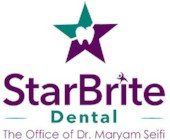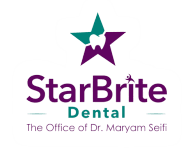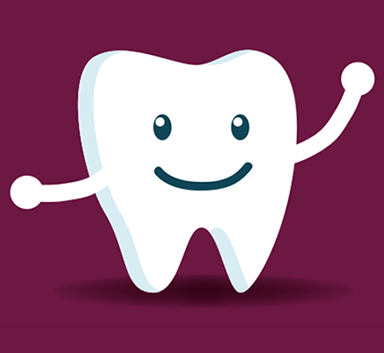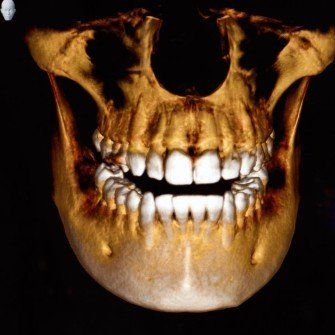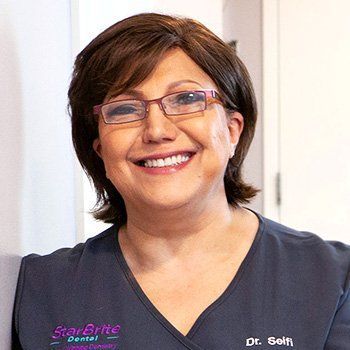Diagnostic - Exams and X-rays
The best way to treat dental and oral health problems is to catch them early and diagnose them thoroughly. At StarBrite dental, we combine the skill of highly-trained professionals with state-of-the-art equipment to identify problems and address them quickly.
Dental Exams
Preventive Medicine is very popular, these days. Why? Because it’s easier, and less expensive, to catch illness, or the potential for it, early. As far as dentists are concerned, the rest of the medical world is just catching up; we’ve been doing preventive dentistry for a long time.
At StarBrite Dental, we recommend a dental exam every sixth months, because that allows us to catch problems while their small. Tooth problems tend to worsen fairly quickly, so if you put more than six months between check-ups, you might easily find yourself in need of significant dental work.
Plaque buildup, gingivitis, cavities, cracked fillings and more—regular dental exams provide an opportunity to deal with problems before they get out of hand. Here are some examples:
Everything mentioned above can be prevented from turning into a serious problem, if caught early.
During your regular exams, tartar will be removed from your teeth, the health of your gums will be checked, the bone levels around your teeth will be measured, fillings will be examined for flaws and the alignment of your teeth will be analyzed. It’s all part of the preventive model dentists have use for generations, and a great way to minimize dental expenses for the long-term by dealing with small problems before they become too advanced.
X-Rays
Another important aspect of a preventive dentistry exam is the taking of dental x-rays. Of course, you know that x-rays are used to look inside your body, but do you know exactly how they work? Simply put, an x-ray image is produced through the use of electromagnetic radiation that pierces your skin like an extremely bright light, in order to take pictures inside your body. Just like any other doctors, dentists and oral surgeons use x-rays to get a good look at areas that can’t be seen with the naked eye. X-rays can identify tooth decay that is hidden by neighboring teeth, diagnose the effects of injury on teeth and even reveal the beginnings of gum disease. At StarBrite Dental, we use state-of-the-art digital x-ray technology that stores images on a computer rather than produce physical films. In addition to making your dental x-rays easier to analyze and store, digital x-rays requires less radiation than traditional x-ray technology.
What Patients Are Saying About StarBrite Dental
How much radiation is in a dental x-ray?
Sometimes, people get nervous about having x-rays taken because they’re concerned about radiation exposure. Here’s an important point: getting an x-ray is not a nuclear threat. In fact, radiation is a very common part of everyday life: There is more radiation exposure during a flight from New York to Los Angeles than there is in a dental x-ray. Here’s a chart that puts it into perspective:
Radiation Dosage Chart
| .00005 | Sleeping next to someone |
| .00009 | Living within 50 miles of a nuclear power plant for a year |
| .00010 | Eating a banana |
| .00025 | Airport security scan |
| .001 | Using a CRT monitor for one year |
| .005 | Dental X-ray |
| .01 | Background dose received by average person on an average day |
| .04 | Flight from New York to LA |
| .07 | Living in a stone, brick or concrete building for one year |
| .1 | Chest X-ray |
| .4 | Annual dose received through food |
| 1.5 | Spinal X-ray |
| 2.4 | Average background dose per person per year (natural background radiation) |
| 4.0 | Mammogram |
| 6.0 | Dose from spending one hour on the ground at Chernobyl (2010) |
| 10.0 | Average CT scan |
| 36.0 | Smoking 1.5 packs a day for one year |
| 50.0 Millisieverts (mSv) | Maximum annual dose permitted in US radiation workers |
Here are some of the tools we use to minimize your exposure during your X-rays:
StarBrite Dental, the Office of Dr. Maryam Seifi
in Rockville, MD is dedicated to keeping you healthy and providing our patients with the safest, most comfortable experience possible. Good quality diagnostic x-rays are crucial to maintaining your overall dental health. Be assured that we do everything possible to keep you healthy by following the ALARA (as low as reasonably achievable) principle for your digital X-rays.
Please do not hesitate to ask questions or discuss your concerns during your next appointment at StarBrite Dental. Make an appointment by calling (301) 770-1070.
Read More About Diagnostics, Exams and X-rays in our Blogs
Contact Us to Schedule an Appointment Today!
*We DO NOT ACCEPT HMO Insurance, State Insurance, Medicaid/Medicare, or discount plans. Fees apply for services.
Evening and Weekend Hours Available
- Monday
- Closed
- Tuesday
- -
- Wed, Fri
- -
- Thursday
- -
- Saturday
- -
- Sunday
- Closed
Office
(301) 770-1070
Fax (301) 770-0544
5936 Hubbard Dr, Rockville, MD 20852
